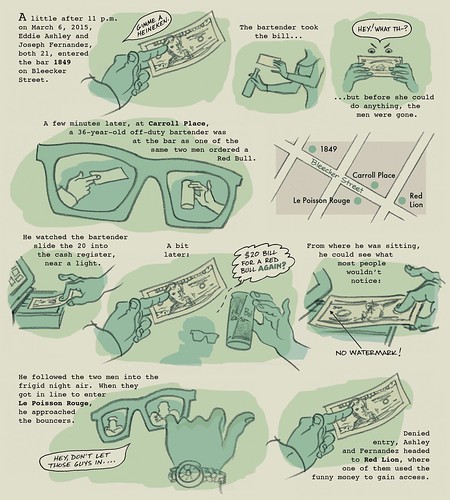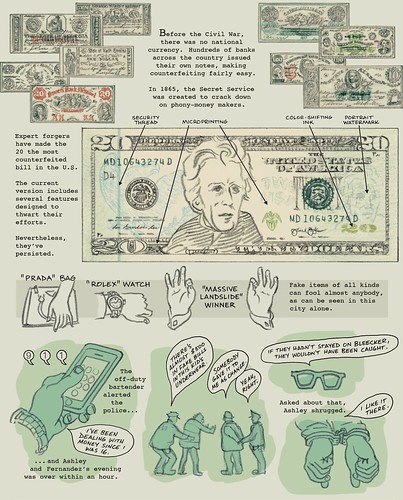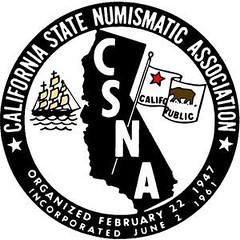
PREV ARTICLE
FULL ISSUE
PREV FULL ISSUE
PASSING COUNTERFEIT NOTES IN NEW YORKThe New York Times has published versions of some of its recent local stories in graphic form. Arthur Shippee forwarded this graphic treatment about counterfeiting. Thanks.
-Editor
  To read the complete articles, see:
Some scams go on forever. Here's a similar story from a New York saloon over a century ago, featuring one of the country's most famous counterfeiters, Emanuel Ninger. I found
this version of the tale in a roundabout way. Written by Gene Hessler as a script for the American Numismatic Association Money Talks radio segment, it was published in the December 1995 issue
of The Clarion by the Pennsylvania Association of Numismatists and digitized by the Newman Numismatic Portal. -Editor
Emanuel Ninger spent his days alone in an upper room of his New Jersey home, as any artist might do. But Emanuel Ninger was no starving artist. How could he be, when he spent his days developing the art of counterfeiting? The man the New York Times would call the "Pen and Ink Counterfeiter" perfected his craft to an art. He would place a piece of bond paper, cut to size, in water colored with coffee grounds. The coffee gave the paper an appearance of moderate handling. Ninger wanted to avoid the attention that might be called to a crisp new note. Then, with an authentic bill under the wet paper, Ninger meticulously traced the entire bill. After the tiny engraved lines were duplicated, he added the appropriate colors with a camel hair brush. It was a counterfeit 1880 $50 note that sent Ninger to jail. On a damp March night in 1896 — just before boarding a ferry in Manhattan for his return to New Jersey — Ninger stopped in at a saloon. The bartender recognized him, and didn't hesitate to change a $50 bill. Soon after Ninger left the bartender noticed ink on his own fingers. He looked at $50 note, which had come in contact with moisture on the bar. Sure enough, part of the design was smudged. The counterfeiter was arrested — and after his trial, Emanuel Ninger served a few years in prison. To read the complete article, see:
Just to show how common this practice is today, here's the story of another small-time counterfeiter in Scotland. Dozens of these are reported each week, and I generally
don't bother commenting on them unless there is something particularly unusual about the story (like a graphic novelization!) -Editor
A FORGER who ran a counterfeit mint and cheated York businesses and shops with his fake £20 notes, has been jailed. Darren Lea Wilson, 31, used a laptop, Photoshopped internet images, a computer printer, shoe polish and other equipment to produce between 100 and 200 fake Scottish £20 notes at his sister’s home, Laura Addy, prosecuting, told York Crown Court. They were apparently worth £2,000 to £4,000. He took some of the notes to York where he deliberately chose low value items to buy and paid for them with fake notes so that he got genuine banknotes and coins in exchange. He was on bail at the time for passing counterfeit notes in Sheffield. To read the complete article, see:
Wayne Homren, Editor The Numismatic Bibliomania Society is a non-profit organization promoting numismatic literature. See our web site at coinbooks.org. To submit items for publication in The E-Sylum, write to the Editor at this address: whomren@gmail.com To subscribe go to: https://my.binhost.com/lists/listinfo/esylum All Rights Reserved. NBS Home Page Contact the NBS webmaster 
|

